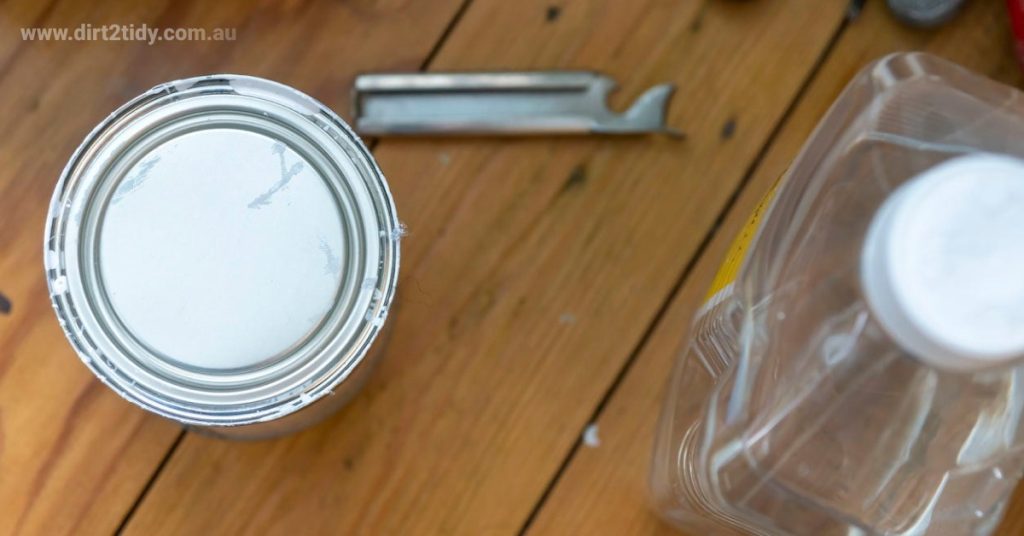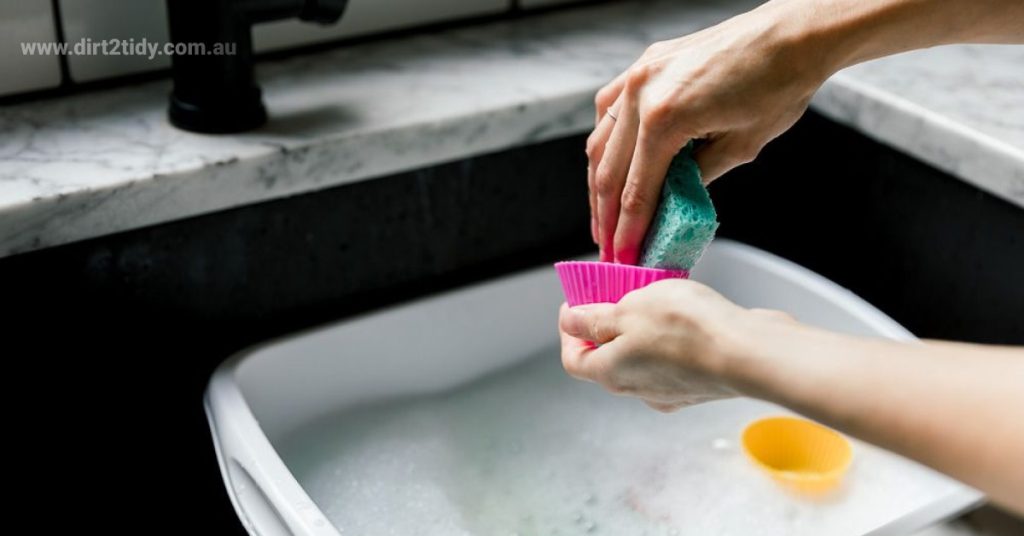Table of Contents
Silicone Cleaning Products:
Silicone is now used in everything from bakeware to phone covers to caulk. Although this adaptable and bendable material is useful in the house, it must be cleaned on a regular basis to keep its beauty.
Silicone is a rubber-like substance that may be used to make rubber-like materials, spreadable fluids, and hard resins. It resembles plastic in that it is simple to soften, harden, form, and shape.
Thanks to its durability and high resistance to heat and stains, silicone has become a more environmentally friendly alternative to plastics for many everyday items. You’ll find it in your favorite bakeware—think spatulas and molded cupcake pans—as well as in kitchen tools like tongs and oven mitts. It even shows up in unexpected places, such as your phone casing or as a sealant in home improvement projects. No matter where it’s used, proper cleaning is essential not only for maintaining appearance, but also for preserving the longevity and safety of your silicone products.
Equipment & Materials for Cleaning Silicone
You don’t need fancy tools—just household basics:
- Soft sponge or microfiber cloth
- Warm water & mild dish soap
- Baking soda for stains
- White vinegar for deodorizing
- Rubber gloves (optional)
For deep cleans: hydrogen peroxide and a bowl or sink for soaking.
These simple supplies keep silicone items spotless and ready to use.
How to Clean Silicone Cases and Covers for Electronic Devices
Silicone cases for phones, tablets, and laptops are flexible and shock-absorbent, but need a little care to stay looking their best.
Remove the case and wipe it with a soft cloth dampened with warm water and a drop of mild dish soap, focusing on grooves and textured areas. Rinse thoroughly and dry completely before putting it back on your device.
Avoid harsh chemicals or abrasive scrubbers, especially on printed designs, to keep your case looking great for longer.
Best Practices for Cleaning Silicone Baby Items
Silicone baby essentials—think pacifiers, teething rings, and bottle nipples—can wind up in sticky situations and need special attention to keep them safe for your little one.
To get started, place used silicone baby items in a pot of boiling water for around 5 to 10 minutes, especially if they’re brand new or have suffered a tumble to the floor. Be sure to let them cool before handling so you don’t end up needing a pacifier yourself!
When it’s time for the daily clean, opt for a mild, fragrance-free soap—preferably one designed for baby gear. Pay close attention to the tiny grooves and ridges where crumbs and stubborn germs like to linger. Scrub gently with a soft-bristle brush or cloth to avoid damaging the silicone.
Rinse each item thoroughly under warm running water to wash away every last bit of soap, and either air dry them or pat them dry with a fresh towel.
If you’re after a little extra reassurance, a UV sterilizer (like the ones from Philips or Munchkin) can zap away bacteria and viruses without the fuss of boiling water or harsh chemicals, giving you even more peace of mind.
With these steps, you can keep silicone baby gear clean, fresh, and ready for whatever adventures your little explorer has in store!
Cleaning Silicone Fitness Gear: Watch Bands and Resistance Bands
Silicone cases are flexible and protective but need care. Wipe with a damp cloth and mild soap, rinse, and dry completely. Avoid harsh chemicals or scrubbing, especially on printed designs, to keep them looking great.
Keeping Silicone Baby Items Safe and Germ-Free
Silicone baby items—pacifiers, teething rings, and bottle nipples—should be washed after each use with mild, fragrance-free soap and warm water, paying attention to grooves and textured areas.
Regular sterilization, either by boiling 5–10 minutes or using a UV sterilizer, keeps them extra safe. Rinse and dry thoroughly to prevent mold.
Pro tip: Keep spare pacifiers in a clean bag for quick swaps!
Cleaning Silicone Personal Care Items
Wash silicone baby items after each use with mild soap and warm water. Sterilize regularly by boiling or UV, then rinse and dry.
How Often Should Silicone Kitchenware Be Cleaned?
After each usage, silicone cookware should be cleaned with dish soap. If the components start to feel sticky, a more thorough cleaning is required otherwise, the problem will simply get worse.
To keep your silicone kitchenware in top condition, make hot water your best friend. After washing with dish soap, give each piece a thorough rinse in hot water, making sure to run your fingers over every inch to check for any lingering residue or tackiness. If anything still feels sticky, don’t hesitate to repeat the cleaning process or step it up with a more detailed scrub. A microfiber cloth works wonders for drying and adds a bit of polish, helping your silicone gear stay fresh, non-sticky, and ready for its next culinary adventure.
Maintaining Silicone Kitchenware
Wash silicone kitchenware after each use with grease-cutting dish soap. For stubborn stains, use baking soda or a splash of vinegar with a soft sponge.
Tips:
- Skip cooking sprays and extra grease.
- Avoid abrasive pads or harsh cleaners.
- Rinse and air dry completely.
- Treat sticky residue promptly.
This keeps your silicone bakeware, spatulas, and molds smooth, stain-free, and easy to clean.
Here are a few suggestions for you:
Use non-acidic detergents (1% concentration like “D-20”) for non-porous surfaces. Avoid high heat when steam ironing silicone. Wash immediately if you notice unusual smells. Silicone can also be cleaned with warm soapy water and a gentle sponge. Store in covered containers to prevent dust.
Extra Tips to Preserve the Quality of Your Silicone Products
- Clean after each use: Regular cleaning prevents the build-up of dirt, grime, and food particles that can leave stubborn stains. For items like children’s toys or bakeware, washing them daily with warm, soapy water keeps them fresh.
- Start mild, escalate if needed: Use mild dish soap and water for routine cleaning before trying other methods. If your silicone kitchen utensils develop a strong odor, soak them in a solution of vinegar and baking soda. For discoloration, an overnight soak in hydrogen peroxide can help restore their original look.
- Mind what you cook: Avoid using silicone utensils with oily foods or foods known to stain, as these can leave lasting marks or odors.
- Gentle handling: Always use a soft sponge or cloth to avoid scratching the silicone surface.
By following these tips and cleaning your silicone products regularly, you’ll keep them looking new and performing well for years to come.
Is Silicone Dishwasher Safe?
Most silicone kitchenware can safely go in the dishwasher, which makes cleanup a breeze. For best results, though, always check the guidance that comes with your particular item. Some silicone pieces may do best on the top rack, away from direct blasts of heat and powerful spray arms that could compromise their shape over time.
When you’re unsure, a quick look at the packaging or the manufacturer’s website—especially for specialty bakeware from brands like Silpat or OXO—can help determine the safest cleaning method. Taking a moment to check these details ensures your silicone stays in great condition for many bakes to come.

Removing Silicone Residue and Cleaning Silicone Materials
When it comes to cleaning ordinary household goods or removing caulk and residue left behind from home improvement projects, there is a range of silicone products cleaners that are simple to apply.
Should You Clean Silicone with Windex?
While it might be tempting to grab a bottle of Windex or other glass cleaners for the job, it’s best to avoid them when cleaning silicone. Many glass cleaners contain ammonia and other harsh chemicals that can harm or degrade silicone over time.
For best results, stick with mild dish soap or a gentle detergent mixed with warm water. This combination keeps your silicone items clean without risking any damage to their flexible and durable finish.
Can You Use Vinegar to Clean Silicone?
Vinegar is great for cleaning silicone, loosening residue and buildup. Soak items in equal parts white vinegar and warm water, or scrub stubborn spots with a sponge. For greasy surfaces, sprinkle baking soda first for a gentle fizzing action that lifts grime without damage.
Removing Hard Water Residue from Silicone
White, chalky deposits from hard water can affect silicone’s appearance and nonstick surface. Soak items in white vinegar for 30 minutes, rinse thoroughly, and dry with a soft cloth. Regular soaks keep silicone smooth and shiny.
Silicone Bakeware Maintenance
Silicone bakeware is useful in a variety of ways. It’s safe to use, convenient to store, and easy to churn out baked items with.
Food and grease, on the other hand, tend to stay to the cloth and take a little elbow grease to remove. Cleaning silicone bakeware using a grease-cutting soap is the easiest method.
Place the stopper in the kitchen sink and fill it with water that is hot enough to clean the silicone. Add a few squirts of grease-cutting dish detergent and soak the bakeware for about half an hour in the soapy water.
You may also like to read: Step by step instructions to Use Baking Soda when Cleaning
When cleaning silicone baking mats, use a non-abrasive scrubber to scrape away filth and stains, making careful to get into all the nooks and crannies. Rinse the soapy residue away and air dries the item upside down on a towel or rack.

What to Do If Mold or Mildew Appears on Silicone Items
Even with the best efforts, sometimes mold or mildew can turn up on silicone kitchenware—especially if items are stored before they’ve dried completely. But don’t fret; you can tackle these stubborn spots with household tricks and a few extra minutes.
Boiling Method for Deep Cleaning
Start by bringing a large pot of water to a gentle boil. Submerge your silicone items fully and let them bubble away for around 10 minutes. The high heat will help loosen anything stuck, including greasy residue and mold. Carefully remove the silicone (tongs are useful here!), let it cool for a moment, then wash thoroughly with hot, soapy water. As always, rinse well and let air dry—preferably upside down—ensuring no moisture is trapped.
Using Commercial Mold and Mildew Removers
If boiling doesn’t do the trick, you can opt for a mold and mildew cleaner formulated for kitchen use. Choose a product that states it’s food-safe—always check the label for suitability before use. Follow the instructions closely: wear gloves if recommended, and let the cleaner sit on affected areas for the specified amount of time. Gently scrub with a soft sponge or silicone brush, then rinse completely and air dry.
No matter which method you try, the key step is to make sure the silicone is bone dry before putting it away. This will help prevent mold from making a return appearance.
Air-dry silicone completely—place items upside down on a clean rack in a well-ventilated area. Avoid towels that leave lint or trap moisture in crevices.
Tough Stains on Silicone Cookware: How to Remove Them
If cleaning your bakeware with soapy water isn’t working, try baking soda and heat. The oven’s high heat temperature softens solidified oil, while baking soda absorbs dirt.
Preheat the oven to 350°F and bake the bakeware for 10 minutes. Take the hot item out of the oven and place it in the sink.
Drizzle some water on the stain and sift a good amount of baking soda over it to make a paste. Before washing the object with warm water, let the mixture dry.
You may also like to read : The Importance of Using Non-Toxic Cleaning Products
Baking soda and water can be used to remove persistent oven rack stains, and oven racks can be cleaned in the dishwasher if they fit.
Cleaning Silicone in the Dishwasher
If you’re short on time, silicone bakeware and utensils can also be safely washed in the dishwasher:
- Allow your silicone item to cool completely after use.
- Place it on either the top or bottom rack of the dishwasher, but be careful to keep it away from sharp objects that might cut or puncture the material.
- Use your regular dishwashing detergent and run a normal hot cycle.
- When the cycle is finished, ensure your silicone items are thoroughly dry with a clean towel before storing.
Tip: Double-check with the manufacturer’s instructions to confirm that your particular silicone piece is dishwasher-safe, especially if it has any printed designs or delicate features. Regular dishwasher cleaning helps keep your silicone bakeware and utensils in top shape, ready for your next culinary adventure.
How to Get Rid of Stubborn Stains on Silicone
Even though silicone is fairly resistant, certain foods—like beets, turmeric, and carrots—have a knack for leaving behind stubborn stains that soapy water just won’t budge. Don’t worry; you can tackle these colorful messes with a few household ingredients.
White Vinegar Solution
For a quick fix, try a white vinegar and water mixture. Combine equal parts vinegar and water in a spray bottle, then generously spritz it over the stained areas. Let it soak in for a couple of hours, reapplying if needed. Afterward, scrub gently with a soft sponge and some dish soap. You can also run the item through the dishwasher on a normal setting. Remember to dry your silicone pieces thoroughly to keep mold at bay.
Tip: If the stain is extra persistent, skip the dilution and soak the item directly in undiluted white vinegar for a few hours before washing.
Hydrogen Peroxide Soak
For heavier discolorations, hydrogen peroxide is your friend. Place your stained silicone in a container just large enough to fit the items, then pour in enough hydrogen peroxide to fully submerge them. Let everything soak overnight.
In the morning, rinse the silicone under clean water, giving it a once-over with dish soap and a soft sponge if you’d like extra assurance. Dry with a clean towel and leave to air dry fully before storing.
This approach helps restore your silicone kitchenware to its original, stain-free state—no matter what colorful foods you’ve been whipping up!
Chlorine Bleach for Stubborn Stains
For tough stains, soak silicone in a diluted bleach solution (2 tbsp bleach per 2 cups water) for up to 24 hours. Rinse, wash with soap, and air dry completely. Use only when gentler methods fail.
Solvents for Softening
Mineral spirits, which are appropriate for removing silicone from hard surfaces such as tile, marble, or concrete, is one item you may have on hand that helps soften silicone products. However, you should use isopropyl alcohol to remove it off plastic or painted surfaces, since it will not affect the surface. It’s possible that the regular alcohol you have at home isn’t powerful enough to perform the job. Instead, use a 99 percent pure industrial-grade isopropyl alcohol.





